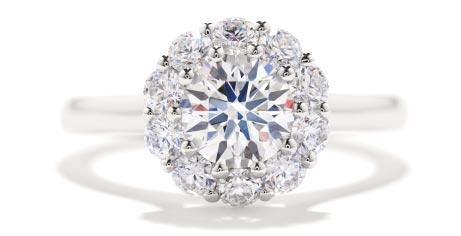
3 minute read
How to Buy a Diamond
how to buy a
Diamonds come in a dizzying array of sizes, quality grades and price ranges, so it’s important to be armed with a few tips about how to evaluate the options. Any diamond purchase begins with understanding the 4Cs: carat weight, clarity, color and cut. Each of these factors, alone and combined has an impact on a diamond’s value.
Advertisement
Carat: Obviously, the larger the diamond, the higher the price, as they are valued primarily on carat size. Larger diamonds are more rare than smaller ones and therefore the price per carat rises exponentially with the size of the diamond.
Clarity: This refers to the presence of flaws within a diamond. Marks on the surface are called blemishes. Internal marks are called inclusions. The amount, type, size and placement of these imperfections can diminish a diamond’s value. The Gemological Institute of America (GIA) clarity scale, the industry standard, contains 11 grades: Flawless (FL), Internally Flawless (IF), Very, Very Slightly Included (VVS1 and VVS2), Very Slightly Included (VS1 and VS2), Slightly Included (SI1 and SI2), and Included (I1, I2 and I3).
Color: The closer a diamond is to being colorless, the higher the grade. GIA’s color grading scale for diamonds, the industry standard, starts with the letter “D” (colorless) and continues with increasing presence of color to the letter Z.

Cut: Some experts believe cut has the biggest impact on a dia-
mond’s beauty. Cut reflects the quality of a stone’s proportions, symmetry and polish, which combine to create the ideal combination of light return, sparkle and fire — of course, there is no single ideal set of proportions, but certain minimum standards of excellence regarding a stone’s roundness, depth, width, uniformity of facets and quality of finish are considered when assigning a cut grade. The American Gem Society (AGS) diamond cut grading system ranks round brilliant stones (the most common cut) on a scale from 0-10, where 0 is “ideal” and 10 is “poor.” The GIA diamond cut grading system ranks cut for round brilliant diamonds on the following scale: “excellent,” “very good,” “good,” “fair” and “poor.” Ideal or excellent cuts reflect most or all of the light that enters a diamond back to the eye; therefore, they are considered top-of-the-line, and will command the highest pricess. A poorly cut diamond is one in which its proportions cause light to be reflected out through the sides or bottom (pavilion) of the stone.
What makes the issue of “cut” so controversial is that different types of cuts — the number and arrangement of facets — affect a diamond in ways that become quite subjective. One cut might produce more sparkle or “scintillation” than light return, and some people prefer that. Or another cut might create fire — that is, it returns the light in a way that produces a spectrum of color, and although light return is usually highly valued according to most grading systems, some people prefer fire. This is the variable that factors in when it comes to branded diamonds. Hearts on Fire and Lazare Kaplan, for example, cut their diamonds to certain standards of excellence and to achieve certain effects.
Although diamonds are graded by very strict standards, each one is unique, and the
only way to truly compare two stones is to look at them side
by side. If you consult a jeweler you trust, you should have no trouble finding the diamond of your dreams — one with the size and quality you desire, in a price range you can afford.










